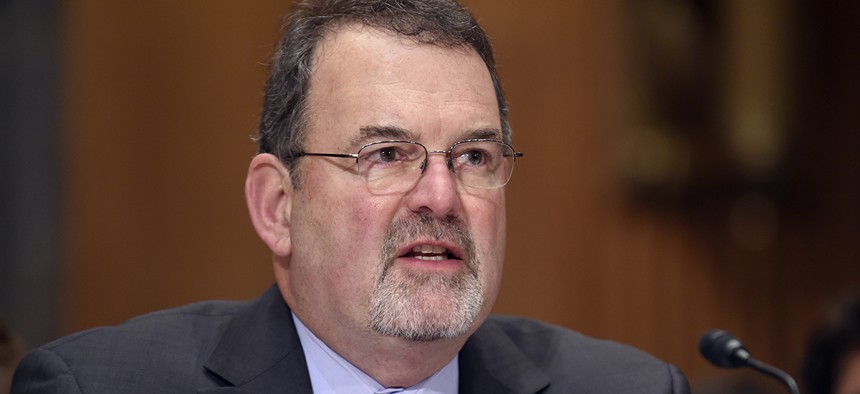3 Things We Learned This Week from the White House’s Top Tech Officials

Federal CIO Tony Scott Susan Walsh/AP
U.S. Chief Information Officer Tony Scott and Thomas Kalil, deputy director for policy at the White House Office of Science and Technology Policy, dropped a few notable soundbites and policy snippets.
Two of the White House’ top tech officials sounded off Wednesday about issues plaguing the country’s critical infrastructure and the need to modernize the government’s digital systems.
U.S. Chief Information Officer Tony Scott and Thomas Kalil, deputy director for policy at the White House Office of Science and Technology Policy, dropped a few notable soundbites and policy snippets during the hour-long panel. Here are the top three takeaways.
1. Tech Acquisition Needs Refresh
In unscripted fashion, Scott explained one reason why nearly 80 percent of the government’s $86 billion IT budget is spent on legacy technology. “The easiest money (in government) to get is the money to keep the old crap going,” he told the audience. “The hardest money to get is for new stuff.”
In other words, government budget cycles don’t lend themselves well to technology spending, and that problem is magnified by the fact that technology is evolving much faster than government policies on tech or spending tend to. Recent legislation like the Federal Information Technology and Acquisition Reform Act was designed to improve tech acquisition, but agencies are still in the early stages of implementing it.
Scott said the government is going to have to “come back to a new design point” sometime in the near future and rethink the hardware, software and networks that have served as the “airbag and bubble-wrapped” backbone for decades.
Much of the government's IT infrastructure predate the types of modern cyberthreats agencies currently face. “We have to have a constant refresh cycle," Scott said. "The networks of yesterday will be obsolete.”
Continuing to add security as an afterthought as opposed to the more effective practice of baking security into the infrastructure will put the government at increased risk to breaches, vulnerabilities and other issues.
Kalil managed to bring home the White House’ point about the challenge legacy technology poses the government with a joke. “Why was God able to create the world in six days? Because he didn’t have any legacy systems,” Kalil said.
2. 18F and USDS Will Survive Administration Shift
The White House sees a future for 18F and the newly created U.S. Digital Service long after President Obama leaves office.
Both are examples of an outside-in approach to fueling innovation and fixing tech problems within government, but many wonder whether these innovation shops – and the professionals who staff them – will be around after next November. A new regime may clean house or focus resources on other priorities.
“I think it’s highly likely that (USDS and 18F) will outlast the presidency,” Kalil said. “Recruiting top tech talent should not be a partisan issue.”
Scott went further, suggesting USDS and 18F will not only last but “continue to grow” as the government keeps focusing on technology as a backbone for public service and seeks innovation from outside its walls.
3. Tech to Solve Societal Challenges
The White House is excited about the Transportation Department’s Smart City challenge. You can read more about it here from Nextgov’s Mohana Ravindranath. DOT promises up to $40 million in funding to the mid-size city with the best plan for a “fully-integrated, forward-looking urban transportation network looks like,” Transportation Secretary Anthony Foxx said.
Evidently, the White House would like to see more examples where federal agencies engage with local governments and academia to improve things like energy efficiency and traffic congestion.
“We’re working with a number of agencies, with companies and research universities to identify things we can do to drive the development of applications for smart cities,” Kalil said.
Kalil said he sees vast potential in the ability for technology to alleviate societal problems.
NEXT STORY: Why Driverless Cars Are Like Elevators



